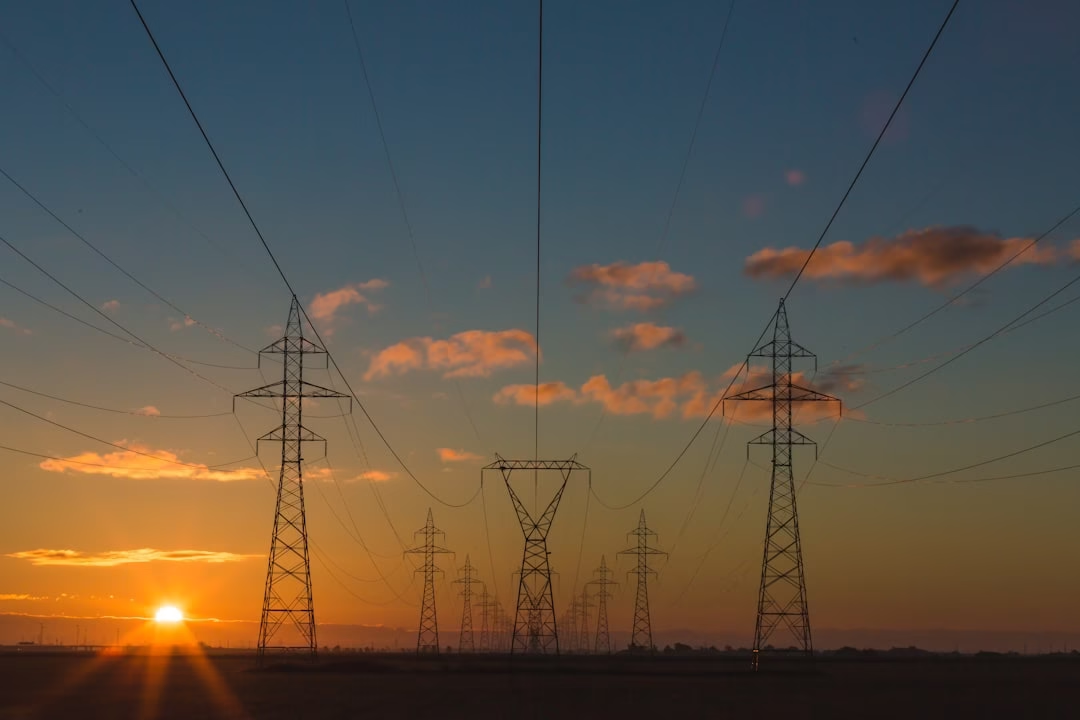Navigating Energy Markets: Trading Dynamics and Pricing Strategies for Renewable and Fossil Fuels in a Changing Landscape

The world of energy markets is undergoing a significant transformation as the demand for diverse energy sources continues to rise. This dynamic landscape encompasses the trading and pricing of energy commodities, ranging from traditional fossil fuels to innovative renewable energy solutions. As we navigate the complexities of energy economics, it becomes crucial to understand how various factors influence market dynamics, including energy policy, technological advancements, and the ongoing energy transition. In this article, we will delve into the intricacies of energy markets, exploring the interplay between renewable energy, fossil fuels, and nuclear energy. We will also examine global energy trends that shape the future of energy commodities and the impact of energy storage and smart grids on enhancing energy efficiency and security. From hydropower and bioenergy to solar power and wind energy, the evolution of energy markets not only reflects our response to climate change but also highlights emerging opportunities for energy investment and innovation. Join us as we unpack these critical themes and explore the future of energy trading and pricing in a rapidly changing world.
- 1. Understanding Energy Markets: The Dynamics of Trading and Pricing Across Renewable and Fossil Fuels
- 2. Global Energy Trends: How Energy Policy and Innovations Shape the Future of Energy Commodities
- 3. The Role of Energy Storage and Smart Grids in Enhancing Energy Efficiency and Security
1. Understanding Energy Markets: The Dynamics of Trading and Pricing Across Renewable and Fossil Fuels
Energy markets are complex systems that facilitate the trading and pricing of various energy commodities, including renewable energy, fossil fuels, and nuclear energy. Understanding these markets requires an appreciation of the dynamics that influence energy pricing and trading activities, particularly as the world undergoes an energy transition aimed at reducing reliance on carbon-intensive sources.
The trading of energy commodities is influenced by a myriad of factors, such as supply and demand, geopolitical events, and energy policy changes. For instance, fluctuations in fossil fuel prices can significantly impact the competitiveness of renewable energy sources like solar power and wind energy. As countries aim to enhance energy security and reduce greenhouse gas emissions, investments in renewable energy technologies are surging, leading to innovations in energy efficiency and energy storage solutions.
Moreover, the integration of smart grids and distributed energy systems is transforming how energy is managed and traded. These advances allow for better energy transportation and the optimization of energy resources, which is essential for accommodating the growing demand for green energy. As we see increasing adoption of electric vehicles, the need for a robust energy infrastructure becomes paramount.
In addition, emerging technologies such as hydrogen energy and carbon capture are reshaping energy economics. These innovations not only provide pathways for decarbonizing energy markets but also present new opportunities for energy investments. As nations strive to meet their climate change commitments, understanding the interplay between traditional energy sources like thermal energy and renewable alternatives becomes crucial.
Hydropower and bioenergy also play significant roles in the energy landscape, contributing to a diverse energy mix that enhances energy security while promoting sustainability. The global energy trends indicate a shift toward more decentralized energy systems, where offshore energy and energy exports become increasingly important.
In summary, the dynamics of trading and pricing in energy markets reflect a broader context of energy transition and policy evolution. As stakeholders navigate these changes, they must consider how to balance energy imports and exports while fostering innovations that align with sustainable development goals. By understanding these dynamics, investors and policymakers can better position themselves to capitalize on the future of energy markets.
2. Global Energy Trends: How Energy Policy and Innovations Shape the Future of Energy Commodities
The landscape of energy markets is continuously evolving, driven by significant global energy trends shaped by energy policy and innovations. As nations grapple with climate change and the need for sustainable practices, the shift from fossil fuels to renewable energy sources has become paramount. This energy transition is not only essential for mitigating environmental impacts but also for enhancing energy security and fostering economic resilience.
Governments worldwide are implementing energy policies that prioritize the development of green energy technologies, such as solar power, wind energy, and hydropower. These policies are designed to promote energy efficiency and reduce reliance on traditional fossil fuels, which are increasingly viewed as unsustainable. Innovations in energy storage, such as advanced battery technologies, play a crucial role in this transition by allowing for the integration of intermittent renewable sources into the energy grid, thereby stabilizing supply and demand dynamics.
Moreover, energy innovations are paving the way for new trading opportunities within energy markets. For instance, the rise of electric vehicles is spurring demand for hydrogen energy and thermal energy solutions, prompting significant energy investments in these areas. Similarly, the development of smart grids is revolutionizing energy transportation, enabling more efficient distribution of energy resources and facilitating the integration of distributed energy systems.
Emerging technologies, including carbon capture and bioenergy, are also influencing energy pricing and trading strategies. By providing ways to utilize fossil fuels more sustainably, these innovations are essential for countries aiming to balance their energy exports and imports while meeting international climate commitments. As nations strive for energy independence, the strategic importance of offshore energy resources is becoming increasingly evident.
In conclusion, global energy trends increasingly reflect the urgency of transitioning to a more sustainable energy future. The interplay between energy policy and groundbreaking innovations is shaping the dynamics of energy markets, ensuring that the world moves toward a more secure, efficient, and environmentally friendly energy landscape. As we navigate this complex terrain, the collaboration between governments, private sectors, and research institutions will be vital for driving the necessary changes in energy economics and ensuring a stable energy supply for future generations.
3. The Role of Energy Storage and Smart Grids in Enhancing Energy Efficiency and Security
The increasing demand for energy, coupled with the urgent need to address climate change, has highlighted the vital role of energy storage and smart grids in enhancing energy efficiency and security. As the energy markets undergo a significant transformation driven by global energy trends, these technologies are becoming essential in supporting the integration of renewable energy sources, such as solar power and wind energy, while ensuring a stable energy supply.
Energy storage systems, including batteries and pumped hydro storage, play a crucial role in balancing supply and demand. They store excess energy generated from renewable sources during peak production periods and release it during times of high demand or low generation, thereby facilitating a seamless energy transition. This capability not only enhances energy efficiency but also fortifies energy security by reducing reliance on fossil fuels and providing backup power during outages. Furthermore, as the adoption of electric vehicles rises, energy storage can support charging infrastructure, making the transition to green energy even more viable.
Smart grids, on the other hand, utilize advanced technologies to optimize energy distribution and consumption. By leveraging real-time data and communication technologies, smart grids enable better management of energy resources, increasing the efficiency of energy transportation and minimizing losses. They facilitate the integration of distributed energy resources, such as rooftop solar panels and small-scale wind turbines, allowing consumers to become active participants in energy markets. This shift empowers individuals to contribute to energy security while also providing opportunities for energy investment and innovation.
Moreover, the combination of energy storage and smart grid technologies is essential for implementing effective energy policy. Policymakers can incentivize the development of these technologies to promote energy efficiency and drive investments in renewable energy. As countries strive to reduce carbon emissions through strategies like carbon capture and the promotion of hydrogen energy, energy storage and smart grids will serve as foundational elements in achieving these goals.
In conclusion, as the energy landscape evolves to accommodate the demands of climate change and energy security, energy storage and smart grids will be at the forefront of revolutionizing how we generate, store, and consume energy. Their integration into the energy markets will not only enhance energy efficiency but also pave the way for robust energy systems that are resilient, sustainable, and capable of supporting the global transition to renewable energy.
In conclusion, the landscape of energy markets is rapidly evolving as the world embraces a significant energy transition. The dynamic trading and pricing of energy commodities, whether from renewable energy sources like solar power and wind energy or traditional fossil fuels, are influenced by various factors, including energy policy and global energy trends. Innovations in energy storage and smart grids are pivotal in enhancing energy efficiency and security, enabling the seamless integration of diverse energy sources such as hydropower, bioenergy, and nuclear energy.
As we navigate the complexities of energy economics, understanding the intricate relationship between energy imports, exports, and investments becomes crucial. The rise of electric vehicles and the potential of hydrogen energy further illustrate the ongoing shifts within energy markets. Additionally, advancements in carbon capture technologies and distributed energy systems offer promising solutions to tackle climate change challenges.
Ultimately, the future of energy markets hinges on continued research and development, fostering energy innovations that can drive sustainable practices and improve energy security. By aligning our strategies with emerging trends and prioritizing green energy solutions, we can create a resilient and efficient energy ecosystem that benefits not only the economy but also the planet. As we look ahead, embracing these changes will be essential for achieving a balanced, responsible, and sustainable energy future.





